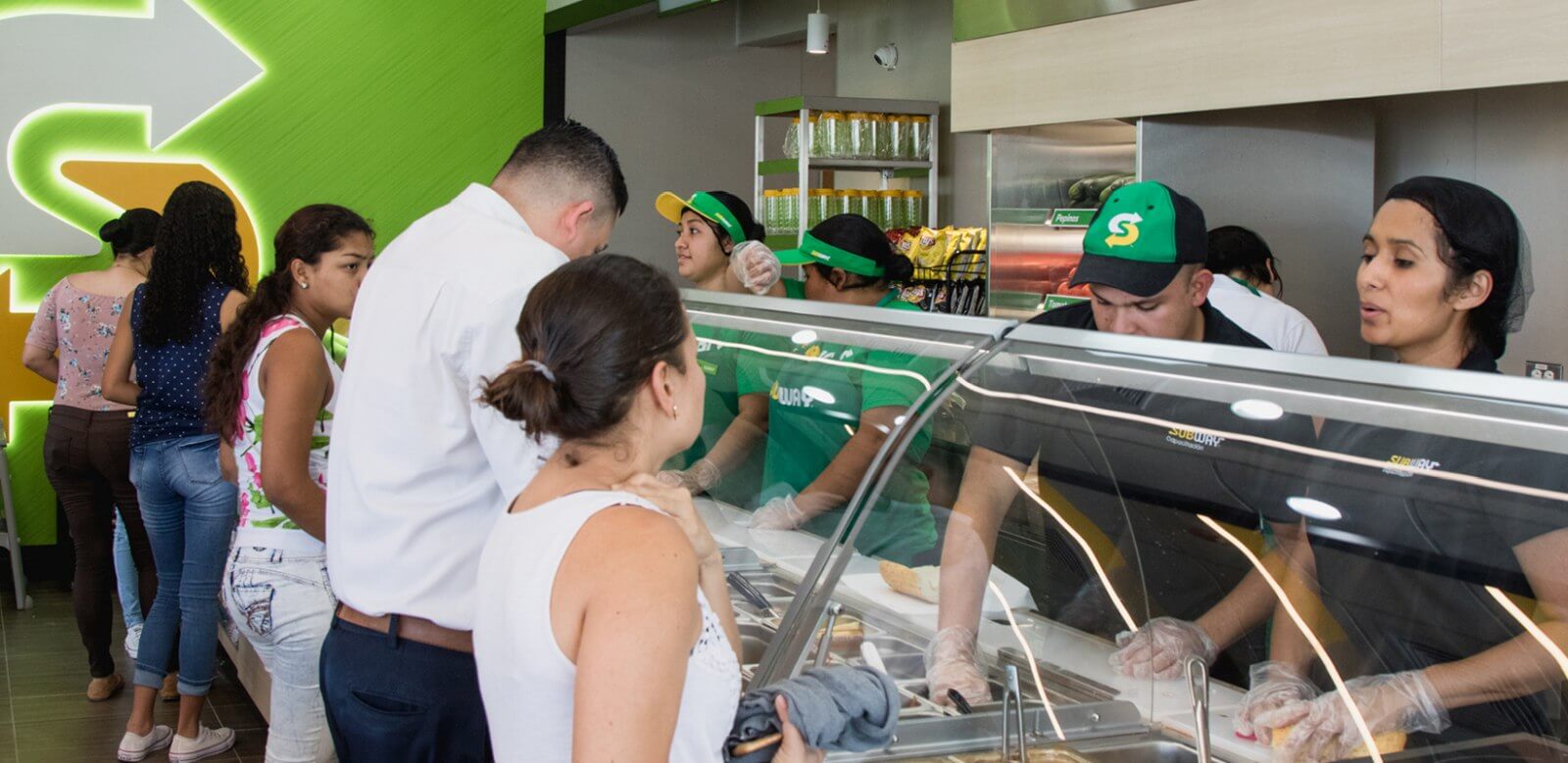
Imagine the following scenario: you have a hamburger joint and a few blocks away they inaugurate a restaurant considered to be the largest hamburger chain in the world. Would you think it is the end for your business?
In Guanacaste this hypothesis becomes more of a reality everyday, above all in Nicoya where restaurants such as KCF arrived little more than a year ago along with other chains like Subway (sandwiches) La Tortillería (food served on handmade tortillas) and the franchise Los Paleteros (popsicles).
Almost all of them coincide in that they saw in Nicoya a strategic point for being a zone that a large number of tourists pass through and for the economic dynamism that it has demonstrated.
Subway, for example, opened in Liberia 14 years ago and started to expand as it saw development in other cantons.
But it’s not only the chains that see opportunities in this region. According to the Ministry of Economy, Industry and Commerce, Guanacaste stands out as the second province – only behind San Jose – with the largest number of entrepreneurs nationally.
In 2016, the number of entrepreneurs registered in the Costa Rican Business Information System (SIEC) was 641; 21% of all entrepreneurs in the country.
That’s why The Voice of Guanacaste spoke with two business specialists in order to understand the risks and opportunities that locals face with the presence of the new franchises and restaurant chains and what they can do in order to offer something that keeps them in the market.
“It’s been totally proven that when there is a Walmart and across the street there is a convenience store, the convenience store doesn’t go broke. Why? They are different segments,” explains Antonio Jiménez, specialist in customer experience and strategy. “It must be clear, though. The competition could take away some of the market, but it doesn’t have to be a threat.”
The Key Is in the Difference
“Subway opened, for example, but I have maintained my clientele. I offer a different menu and it’s really clear to me that the first impression is key and that the quality of the food and the service can never change.”
This phrase is from chef Daysi Barrantes, who opened a healthy food window a little over two months ago called Canela Azul, on the north side of the Nicoya park.
For her and the specialites, the key to keeping your business alive and triumphing is marking the difference.
It’s about creating differentiating elements, evoliving, being flexible and constantly training yourself.
José María Calvo, head of innovation at Double Digit, assures that the first thing to do in order to compete head to head with a chain or any other establishment is define clearly what it is I am offering and to whom.
“Ask yourself: what can I do to separate myself from the competition,” Clavo said. “Sometimes it’s with very simple things: put some stools on the sidewalk, add Wi-Fi, things that motivate people to stay longer and with that even increase their consumption.”
Jiménez adds that flexibility is a key ingredient.
In his opinion, restaurant chains are slower at reacting to changes while a small business has the luxury of changing immediately when it notices that its customers are asking for something different. “If a customer wants more rice, give it to them!” Jiménez said, explaining that the added value of local restaurants is that they can offer a much more personalized service.
Both specialists agree on the necessity to define through which channels the business will be advertised: social media are not to be missed.
Competition Also Adds Value
For chains to choose Guanacaste as a strategic point to consolidate their operations is far from being considered a negative for the zone.
The creation of direct jobs and the training for hired personnel are dynamizing factors for the region’s economy.
In their most recent openings, Subway, in Santa Cruz and Nicoya, and La Tortillería, also in Nicoya, hired 30 people.
Local business owners and entrepreneurs can also take advantage of the supply chains with these larger companies. This possibility will depend on how much the company wants to get involved in the community.
Gia Pandolfo, head of marketing for Subway, commented that, for example, the restaurant tries to generate supply chains but that they must adhere to the franchise’s international requirements, so flexibility is minimum.
On the other hand, the owner of La Tortillería, Luis Diego Araya, didn’t specify how many local entrepreneurs they work with, but he assured that they do it.
“We buy cheese, plantain leaves… And the plates that we use at the locale all come from the Guatil community,” Araya said.
If it really is an era of change and adjustments, the last thing that local entrepreneurs should do is quit.







Comments